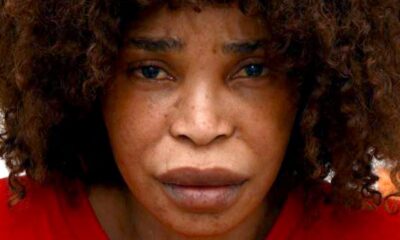Life Style
Thelma Barlow: A Beloved Icon of British Television
Published
3 weeks agoon
By
Harry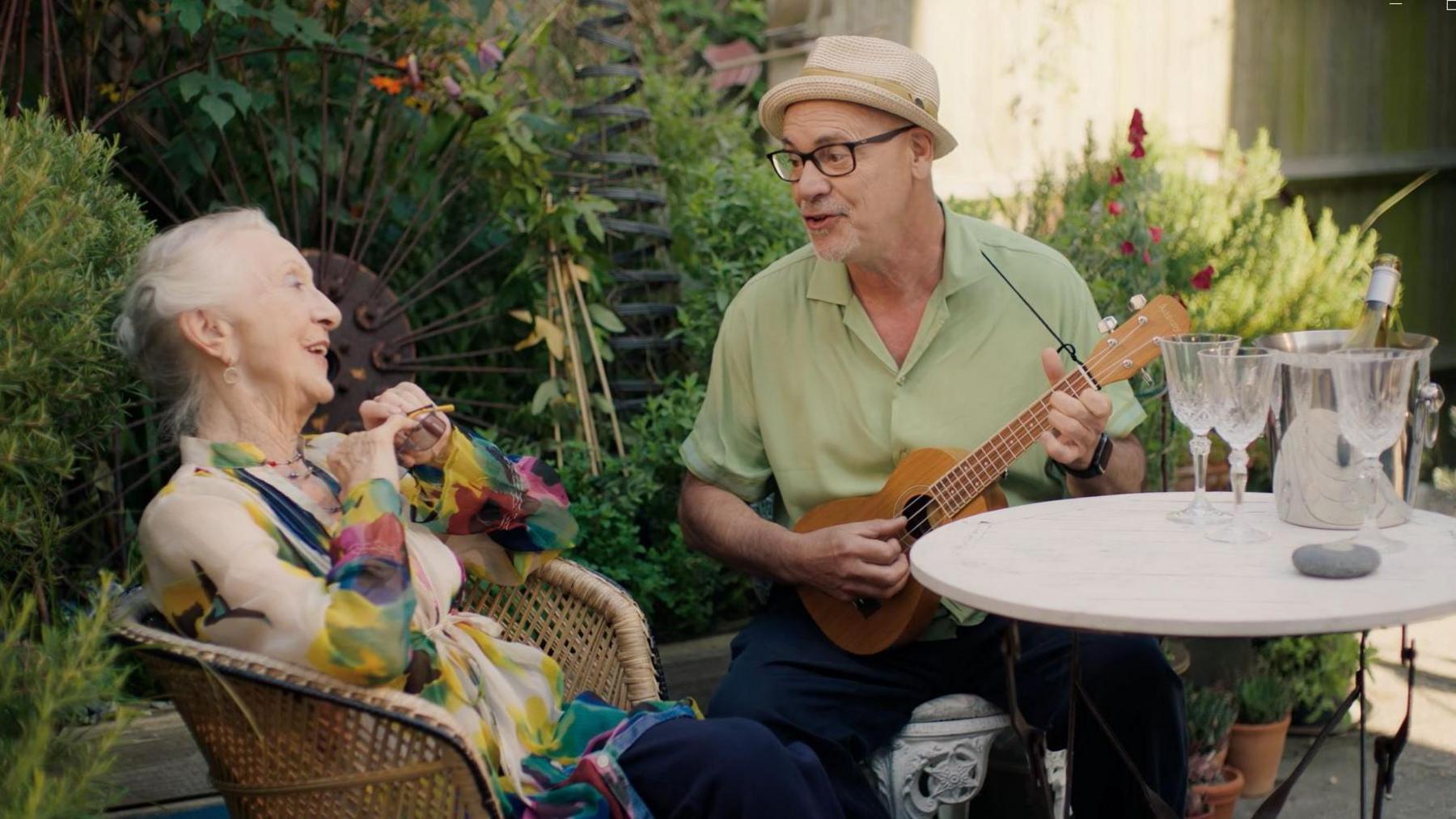
Thelma Barlow is a celebrated British actress best known for her role as Mavis Wilton in the iconic soap opera Coronation Street. With a career spanning over five decades, Barlow has earned her place in British television history through her memorable performances, strong stage presence, and a keen ability to connect with audiences. She may be best remembered for her long-running role on Coronation Street, but her career extends far beyond the cobbled streets of Weatherfield. This article explores the life and career of Thelma Barlow, detailing her contributions to television, stage, and film, and her lasting impact on British entertainment.
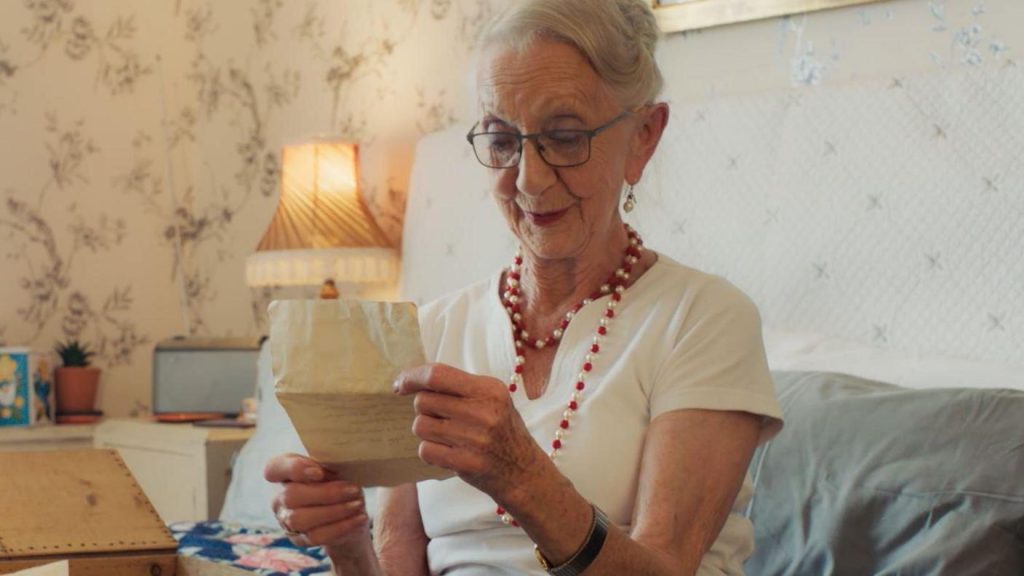
Early Life and Career Beginnings
Thelma Barlow was born on June 19, 1929, in Middlesbrough, England. Raised in a working-class family, Barlow discovered her passion for acting early in life, participating in local theater groups during her youth. However, like many aspiring actors of her generation, she faced considerable challenges in breaking into the industry.
Before becoming a full-time actress, Barlow worked as a secretary—a position she held for several years to support herself. She continued to act part-time, participating in amateur dramatic societies in her spare time. This dedication eventually paid off when she received formal training at the Guildhall School of Music and Drama in London. Her training equipped her with the skills and confidence she needed to pursue her acting ambitions.
Breakthrough Role: Mavis Wilton on Coronation Street
In 1971, Barlow was cast in the role that would change her life and make her a household name in the UK: Mavis Riley, later known as Mavis Wilton, in Coronation Street. Originally intended as a brief role, Mavis quickly became a central character in the show due to Barlow’s natural talent and the character’s unique appeal.
Mavis Wilton was a somewhat shy, endearing, and occasionally dithering character who worked in Rita Fairclough’s corner shop. Her awkward romance with Derek Wilton became one of the most beloved storylines on Coronation Street, endearing Barlow to millions of viewers. The “will-they-or-won’t-they” aspect of Mavis and Derek’s relationship, combined with Barlow’s impeccable comedic timing, added a touch of lightheartedness to the show.
Barlow’s portrayal of Mavis earned her praise for her ability to bring depth to a character that could easily have been one-dimensional. Over the course of her 26-year stint on the show, Mavis became an iconic character, symbolizing the quirky, relatable side of British soap operas.
Life Beyond Coronation Street
In 1997, after 26 years on Coronation Street, Barlow made the difficult decision to leave the show. Her departure marked the end of an era for fans, as Mavis was written out of the series. Her exit was explained with the character deciding to leave Weatherfield to start a new life elsewhere.
Despite the risk of being typecast, Barlow continued to pursue her acting career, demonstrating her versatility and determination to expand her range. She took on roles in various British television dramas and comedies, including Doctors, Casualty, and Fat Friends. These roles allowed her to explore different characters, showcasing her adaptability as an actress.
Barlow’s performance as Dolly Bellfield in the comedy-drama Dinnerladies, created by Victoria Wood, was particularly well-received. Dinnerladies aired from 1998 to 2000, and Barlow’s character, Dolly, provided comic relief while also displaying a sense of vulnerability. Her collaboration with Wood, one of the UK’s most respected comedians, proved to be another highlight in Barlow’s career.
Film and Theater Work
Barlow’s talent extended beyond television, as she also worked in film and theater. In 2005, she appeared in Mrs. Henderson Presents, a British comedy-drama film directed by Stephen Frears, alongside Judi Dench and Bob Hoskins. The film was both a critical and commercial success, and Barlow’s performance was praised for its subtlety and charm.
Throughout her career, Barlow has also remained active in the theater. She performed in various stage productions, displaying a flair for live performance that allowed her to connect with audiences in a more immediate and intimate way. Her work on stage has showcased her range as an actress, proving that she could take on challenging and diverse roles.
Personal Life and Legacy
Despite her fame, Barlow has managed to maintain a relatively private life. She is known for her down-to-earth personality and dedication to her craft, traits that have earned her respect in the entertainment industry. Barlow married Graham Barlow in 1956, and they had two children together before ultimately separating.
Barlow’s legacy in British television is firmly established. As Mavis Wilton, she brought a unique charm to Coronation Street, creating a character that will be remembered for years to come. Her contributions to television and theater have inspired a generation of actors, particularly women, who see her as a role model for persistence, humility, and passion for acting.
Thelma Barlow’s Awards and Recognition
While Barlow did not receive many formal awards during her time on Coronation Street, her contributions to British television have been acknowledged through fan accolades and industry recognition. Her portrayal of Mavis Wilton remains iconic, and she is frequently cited as one of the most beloved characters in the history of British soap operas.
Barlow’s commitment to her roles, even when they did not receive mainstream recognition, speaks volumes about her work ethic and dedication to her craft. Her work continues to be celebrated by fans and actors alike, highlighting the lasting impact she has had on British television.
Conclusion
Thelma Barlow is a cherished figure in British entertainment, celebrated for her contributions to television, film, and theater. Her portrayal of Mavis Wilton on Coronation Street captured the hearts of millions, and her work in Dinnerladies and other projects demonstrated her versatility and talent. Even after stepping away from the spotlight, Barlow’s legacy lives on through the iconic characters she brought to life.
Her ability to connect with audiences and bring humor, depth, and charm to her roles has solidified her place in television history. For fans of Coronation Street and British television in general, Barlow’s performances remain a testament to her remarkable talent and dedication to her craft.
FAQs
1. What role is Thelma Barlow best known for?
Thelma Barlow is best known for her role as Mavis Wilton in the British soap opera Coronation Street. She played Mavis from 1971 to 1997, becoming one of the most beloved characters on the show.
2. Why did Thelma Barlow leave Coronation Street?
After 26 years on Coronation Street, Barlow decided to leave the show to pursue other acting opportunities. She wanted to avoid being typecast and explore new roles.
3. Did Thelma Barlow act in other TV shows after Coronation Street?
Yes, Barlow continued her acting career after leaving Coronation Street. She appeared in shows like Doctors, Casualty, Dinnerladies, and Fat Friends, showcasing her range and versatility.
4. Has Thelma Barlow won any awards for her work?
While Barlow did not receive many formal awards during her time on Coronation Street, her portrayal of Mavis Wilton remains iconic and beloved by fans. She has earned considerable respect in the industry for her dedication and talent.
5. What is Thelma Barlow doing now?
As of recent years, Thelma Barlow has largely retired from acting. She occasionally makes public appearances and is celebrated by fans and the British entertainment industry for her contributions to television.
6. Was Thelma Barlow involved in theater?
Yes, Barlow performed in various stage productions throughout her career, showcasing her talent in live theater. Her work on stage highlights her range as an actress, beyond her well-known television roles.
7. Who did Thelma Barlow play in Dinnerladies?
In Dinnerladies, Thelma Barlow played Dolly Bellfield, a character known for her humorous and sometimes quirky interactions. The show, created by Victoria Wood, was another successful project that showcased Barlow’s comedic timing and talent.
Life Style
Cholitas: The Resilient Indigenous Women of Bolivia
Published
6 days agoon
November 16, 2024By
Harry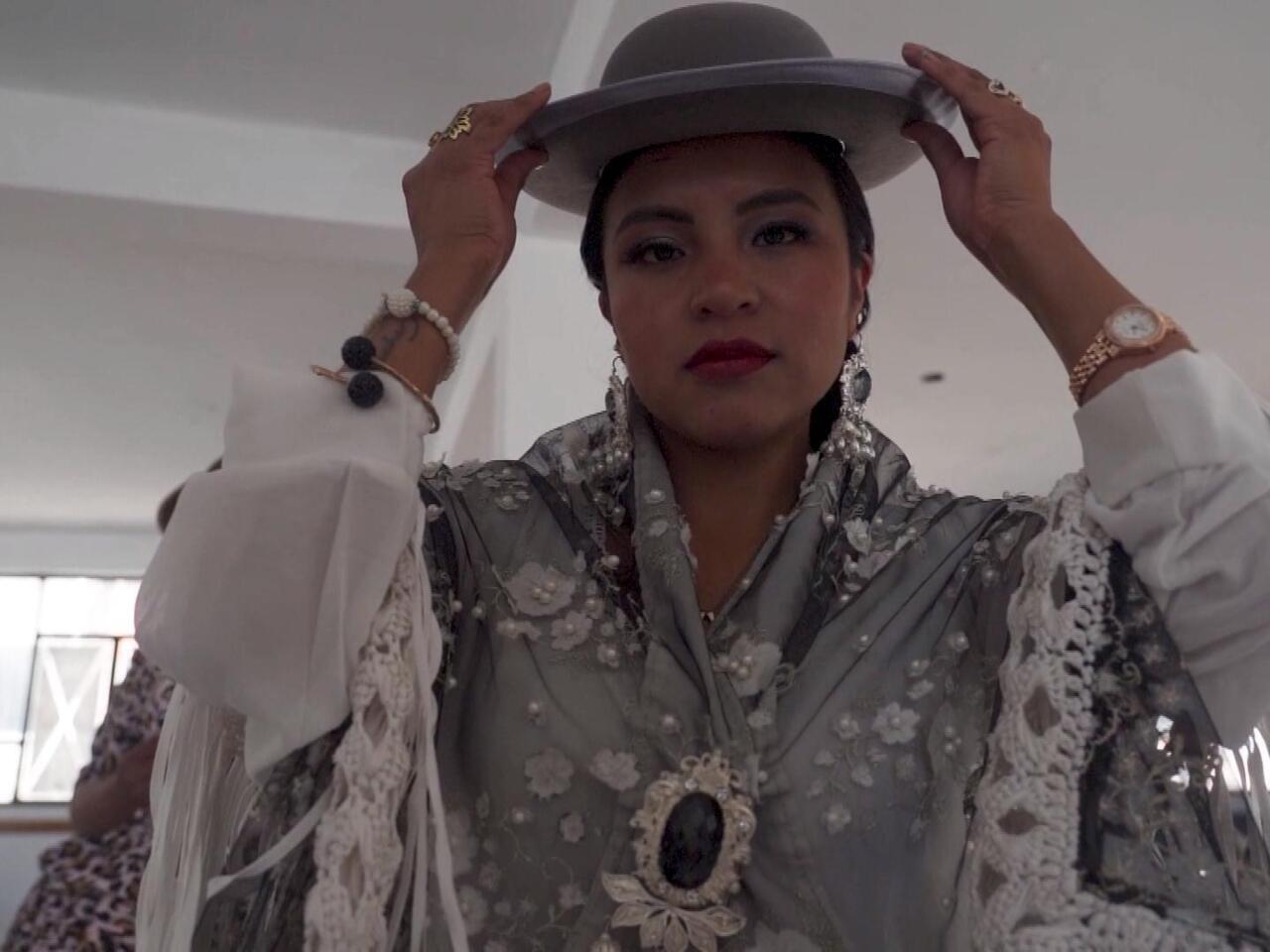
In the highlands of Bolivia, there is a vibrant and powerful symbol of cultural pride, resilience, and resistance: the Cholita. This term refers to indigenous women, particularly those from the Aymara and Quechua communities, who have long been central figures in the country’s social fabric. Their distinctive clothing, cultural practices, and social roles are not only a source of pride but have also become symbols of empowerment, especially as these women navigate a complex socio-political landscape shaped by colonialism, racism, and gender inequality.
In this article, we will explore the historical significance of the Cholita, the evolution of her identity, the challenges she has faced, and how today’s Cholitas are reclaiming their cultural heritage and asserting their presence in contemporary Bolivia.
The Origins and History of the Cholita
The term “Cholita” has its roots in the colonial history of Bolivia, where it was used as a derogatory term to describe indigenous women, typically those of Aymara or Quechua descent, who lived in rural areas or lower-income urban neighborhoods. In the colonial period, the Spanish used the term “Chola” to refer to mixed-race women, while “Cholita” became a more diminutive, condescending version of the term. It implied inferiority, often marking these women as both racially and socially subordinate.
For centuries, Cholitas were marginalized, treated as second-class citizens. During the Spanish colonial period, indigenous peoples, particularly women, were subjected to extreme forms of exploitation, including forced labor, high taxes, and social exclusion. This discrimination continued throughout Bolivia’s history, even after the country gained independence in the 19th century.
Indigenous women, or Cholitas, were often confined to rural, impoverished areas, facing both racial discrimination from the majority mestizo (mixed-race) and white populations, and gender discrimination within their own communities. However, these women were also resilient and resourceful, contributing to their communities through agriculture, textiles, and familial roles.
The 20th century brought important changes. In 1952, the Bolivian National Revolution led to the agrarian reform, which sought to give land to indigenous communities, though their social standing would not change drastically overnight. It wasn’t until the 1980s and 1990s, with the rise of social movements, that Cholitas began to assert their cultural identity and fight for social, political, and economic rights.

The Iconic Cholita Fashion
One of the most recognizable elements of Cholita identity is their distinctive traditional clothing. This style is not just about fashion but also carries deep cultural and historical significance. The traditional Cholita outfit includes a colorful, layered skirt (known as a pollera), a shawl or mantle (called a manta), a small bowler hat, intricate jewelry, and braided hair. This style is primarily derived from the Aymara and Quechua cultures but has evolved over time.
The pollera is perhaps the most iconic piece of Cholita attire. These skirts are voluminous and often brightly colored, made from layers of fabric that create a distinct, circular shape when worn. Traditionally, Cholitas would wear several layers of the pollera, with the fabric chosen to reflect the woman’s wealth and status. The vibrant colors and patterns also signify cultural pride and regional identity. These skirts were worn not only to showcase femininity but also to reflect the woman’s ability to produce and care for her family, as the layers symbolized the resilience and strength of the indigenous woman.
The bowler hat is another hallmark of the Cholita’s look, and its inclusion in Cholita fashion has an interesting historical origin. The hat became a symbol of resistance to colonial influences. In the early 20th century, the colonial elite imposed European-style dress on indigenous women. The bowler hat became a practical solution for Cholitas to maintain their own cultural identity while incorporating elements of European fashion. Today, it is proudly worn as part of the traditional attire, reflecting the fusion of indigenous and European influences in Bolivian culture.
Cholitas also adorn themselves with beautiful jewelry, including long necklaces, earrings, and silver bracelets. These pieces often have symbolic meanings, representing cultural heritage, spirituality, and community ties. The jewelry is not merely ornamental; it signifies wealth, social status, and a deep connection to indigenous traditions.
The Cholita’s Social and Economic Role
Historically, Cholitas have been central to the economy of Bolivia, especially in rural areas. Women in indigenous communities have long been involved in agriculture, textile production, and weaving. These women not only managed the home but also played crucial roles in local markets, ensuring the survival and well-being of their families and communities.
In rural settings, Cholitas are often responsible for the cultivation of food, managing livestock, and taking care of domestic responsibilities. Their agricultural knowledge and skills in textiles, particularly weaving, are handed down through generations, preserving important cultural traditions.
In urban areas, Cholitas have often worked in informal sectors, such as selling food, clothing, and other goods in local markets. Though their labor has been undervalued and underpaid for centuries, these women have always been an integral part of the Bolivian economy. However, despite their contributions, Cholitas have faced significant social and economic challenges. In Bolivia, as in many other countries, indigenous women have been systematically excluded from political power, education, and access to healthcare.
Cholitas and the Fight for Gender Equality
While Cholitas have always been resilient, their fight for equality has only recently gained more visibility. In the last two decades, Bolivia has witnessed a significant social and political transformation, particularly with the election of Evo Morales, the country’s first indigenous president, in 2006. Morales’s government was known for its progressive policies aimed at empowering indigenous communities, including the promotion of gender equality. This shift in political power has had a profound impact on the social status of indigenous women, as Cholitas began to gain more visibility in the national discourse.
Cholitas have become active participants in both the political and social spheres, advocating for better education, healthcare, and economic opportunities. They have also become increasingly visible in Bolivia’s growing indigenous rights movements. The representation of Cholitas in politics, the arts, and public life has shifted from a symbol of oppression to one of pride, strength, and resilience.
Today, Cholitas are fighting for social justice, demanding an end to racism, sexism, and economic inequality. They are taking part in social movements, such as the Plurinational State of Bolivia, which was established in 2009 and recognizes the rights of indigenous peoples. They are also increasingly represented in Bolivia’s growing feminist movements, which aim to address both gender and racial inequalities.
Cholita Wrestling: Empowerment Through Sport
One of the most fascinating and empowering aspects of modern Cholita identity is the rise of Cholita wrestling, or lucha libre. This unique form of wrestling, where Cholitas take part in high-energy bouts, has become a symbol of resistance and empowerment. Cholita wrestlers, often dressed in their iconic traditional attire, perform in arenas, challenging stereotypes and proving their physical strength.
Cholita wrestling began as a novelty act, but over time it has become an important form of expression for indigenous women. In these wrestling matches, Cholitas demonstrate their strength, agility, and resilience, all while challenging the social norms that have historically limited their roles. The popularity of Cholita wrestling has made its participants national heroes and cultural icons. The wrestlers, often strong and unapologetically bold, represent the triumph of indigenous women who are no longer relegated to the margins of society.
Conclusion: Reclaiming Identity and Celebrating Culture
The Cholita is no longer just a symbol of oppression or a vestige of Bolivia’s colonial past. She has transformed into a symbol of strength, pride, and empowerment. Through her fashion, her participation in the workforce, and her growing role in politics and social movements, the Cholita represents the resilience of indigenous women who have overcome centuries of marginalization. Today, Cholitas are reclaiming their cultural heritage, challenging racism, and asserting their rights in a rapidly changing Bolivia.
As Bolivia continues to navigate its social and political landscape, the role of the Cholita will remain crucial in shaping the future of the nation. By embracing their identity and fighting for equality, Cholitas are not just transforming their own lives but also the lives of future generations. They are proving that identity, culture, and tradition can be powerful tools for social change.
FAQs
1. Who are Cholitas? Cholitas are indigenous women from Bolivia, particularly from the Aymara and Quechua communities. They are known for their distinctive traditional clothing, which includes colorful skirts, shawls, and bowler hats. Cholitas have long been marginalized in Bolivian society but have increasingly become symbols of pride, resilience, and empowerment.
2. What does the term “Cholita” mean? The term “Cholita” originated as a derogatory term used by the Spanish to refer to indigenous women. Over time, however, it has been reclaimed by indigenous women as a symbol of cultural pride and strength.
3. What is Cholita wrestling? Cholita wrestling is a form of lucha libre (professional wrestling) where indigenous women, dressed in their traditional clothing, engage in high-energy wrestling matches. It has become a symbol of empowerment and a way for Cholitas to challenge stereotypes about gender and race.
4. Why is the Cholita’s traditional clothing important? The traditional clothing worn by Cholitas, including the pollera (skirt), bowler hat, and intricate jewelry, is an important symbol of indigenous identity, cultural pride, and resilience. The clothing represents a fusion of indigenous traditions and European influences, reflecting the complex history of Bolivia.
5. How have Cholitas contributed to Bolivia’s economy? Historically, Cholitas have played an integral role in Bolivia’s economy, particularly in rural areas where they worked in agriculture, textiles, and weaving. In urban areas, Cholitas have been key participants in informal markets, selling goods and providing for their families.
6. What role do Cholitas play in Bolivia’s social movements? Cholitas have become increasingly active in Bolivia’s social and political movements, particularly in advocating for indigenous rights and gender equality. They are central figures in the push for social justice and greater representation in government and the workforce.
Life Style
Property Guardianship: A Unique Housing Solution
Published
1 week agoon
November 12, 2024By
Harry
In recent years, property guardianship has gained traction as a creative and affordable alternative to traditional renting or homeownership. It offers a unique way for individuals to live in vacant or underused properties at a fraction of the cost, while simultaneously providing property owners with an added layer of security. Property guardianship is often seen as a win-win arrangement: it helps guardians save on housing costs while giving property owners peace of mind and a solution for managing empty properties. In this article, we will explore what property guardianship is, how it works, its benefits, and some common questions about the concept.
What is Property Guardianship?
Property guardianship is a housing arrangement where individuals (known as “guardians”) live in vacant or unused properties, typically at a lower cost than traditional rental prices. In exchange for affordable accommodation, property guardians take on the responsibility of maintaining and securing the property, ensuring that it is not subject to vandalism, squatting, or other forms of neglect.
These properties could include office buildings, schools, hospitals, former hotels, or industrial sites, often situated in desirable or urban locations. Many of these properties would otherwise be empty for extended periods before they are either demolished, renovated, or re-purposed. Property guardians typically sign a license agreement (rather than a formal tenancy agreement) which outlines their rights and responsibilities during their stay.

How Does Property Guardianship Work?
Property guardianship programs are often managed by specialist companies or property guardian agencies, who act as intermediaries between property owners and potential guardians. The process typically works as follows:
- Property Owners: Property owners, including commercial real estate firms, developers, or government entities, will contact property guardian agencies when they have vacant properties that need protection or management. These properties are usually unoccupied for a considerable period of time but require a level of security and upkeep.
- Guardian Agencies: The agency assesses the property to determine its suitability for guardianship and its potential to be used as a residential space. They also verify that the property meets safety standards and regulatory requirements for human habitation. Once the property is deemed suitable, the agency begins recruiting guardians to fill the space.
- Guardians: Individuals interested in living in these properties apply to the agency. The agency typically conducts background checks, interviews, and determines whether the applicants meet the criteria (such as being reliable, responsible, and able to maintain the property). Guardians typically pay a much lower rent or license fee in exchange for their role in securing the property.
- Living as a Guardian: Once selected, the guardians move into the property, where they will live and maintain the building while ensuring that it remains secure. They may be asked to perform light maintenance tasks such as cleaning common areas, reporting any issues with the property, and occasionally taking part in security patrols.
- Ending the Agreement: Property guardianship agreements are usually more flexible than traditional leases, with the agency or the property owner having the right to terminate the arrangement with relatively short notice (often 28 days). However, guardians may choose to leave earlier if they find other housing options.
The Benefits of Property Guardianship
1. Affordable Housing
One of the primary draws of property guardianship is its affordability. In many cities, especially those with high rental prices, property guardianship offers a way to live in prime locations at a fraction of the cost of traditional renting. Guardians typically pay less than half of what they would for a similar property, depending on the location and size of the space. This can make a significant difference for individuals on tight budgets, students, or young professionals looking for affordable housing.
2. Living in Desirable Locations
Many property guardianships are located in central, high-demand areas where rental prices are prohibitively expensive. Cities with large student populations or high concentrations of professionals often have a high demand for residential space. Property guardianship allows people to live in these areas without the hefty price tag. For example, an office building in the heart of a city could become a guardianship property, offering residents access to vibrant neighborhoods and better connections to public transport or amenities.
3. Security for Property Owners
Property guardianship offers property owners and landlords a way to safeguard their vacant properties without having to rely solely on expensive security services. Guardians act as a deterrent to potential squatters, vandalism, or break-ins. Additionally, the guardians typically have a direct responsibility for the upkeep of the property, ensuring that it remains in good condition. This arrangement provides both peace of mind and financial savings for the property owner.
4. Flexibility and Short-Term Living
While property guardianship contracts are often shorter than traditional leases, they still offer a level of flexibility. Most agreements can be terminated with relatively short notice, meaning guardians can move out quickly if their circumstances change. This can be ideal for people in transitional phases of life, such as those between jobs, completing short-term projects, or students who need temporary housing.
5. Minimal Overheads
Guardianship schemes often come with fewer administrative and legal requirements than traditional rental agreements. Since guardians are technically “licensees” and not tenants, they have fewer rights and responsibilities, such as less protection from eviction. This simplicity can be advantageous for both property owners and guardians.
6. A Sense of Community
Depending on the property and its layout, property guardians often live in close quarters, fostering a sense of community. Shared spaces and common areas can help build connections among residents. Many property guardians form tight-knit communities, creating a sense of camaraderie and support among those living in similar circumstances.
Who Can Become a Property Guardian?
Anyone can potentially apply to become a property guardian, but certain criteria typically apply. These include:
- Age: Guardianships are generally available to adults over the age of 18, though the age range can vary. Some agencies may prefer more mature guardians, while others may target younger, more transient groups.
- Background Check: Agencies will often conduct background checks to ensure the applicants have a clean criminal record and a history of responsible behavior. Guardians are expected to be reliable, trustworthy, and able to follow the terms of the license agreement.
- Commitment: Guardians are typically required to be flexible and willing to stay in the property for a period of time. While the contracts are flexible, guardians need to commit to taking care of the property and following any maintenance rules.
- Pets: Many property guardianship schemes do not allow pets, as some properties may not be suitable for animals. However, some agencies may allow pets with special permission.
Challenges of Property Guardianship
While property guardianship offers many benefits, it is not without its drawbacks. Potential downsides to consider include:
- Lack of Stability: Guardianship agreements can be terminated with relatively short notice, so there is always a level of uncertainty about how long you will be able to stay in the property. This can be unsettling for people looking for long-term housing security.
- Basic Living Conditions: Many properties used for guardianship may not be fully furnished or may require residents to take on some DIY tasks. The living conditions might be more basic than what you would find in a typical rented home.
- Limited Legal Rights: As guardians are considered licensees rather than tenants, they have fewer legal protections. If the property owner or agency wishes to terminate the agreement, they may not need to follow the same legal procedures as a landlord-tenant relationship would require.
- Shared Living Spaces: Depending on the property, guardians may have to share communal spaces like kitchens and bathrooms with other residents. This may not suit everyone, especially those who prefer more privacy.
Conclusion
Property guardianship is an innovative housing solution that offers affordable, flexible living in exchange for security and property management duties. It can be an ideal option for individuals looking for lower-cost accommodation in sought-after locations or those in need of temporary housing. While the living arrangements come with certain challenges, such as less stability and fewer legal protections than traditional renting, property guardianship provides a valuable opportunity for both guardians and property owners.
In many urban areas where rental costs are skyrocketing, property guardianship offers a potential solution that benefits both parties. For those who value flexibility, community, and lower living costs, property guardianship might just be the perfect housing option.
FAQs
1. How long can you stay as a property guardian?
The length of stay varies depending on the property and agreement. While guardianships are typically short-term arrangements, some guardians may stay in a property for several months or even years. The property owner or agency can end the agreement with a month’s notice, but you can also choose to leave at any time.
2. Can I bring my pet with me to a property guardianship?
Most property guardianship schemes do not allow pets, but some may make exceptions on a case-by-case basis. It’s important to check with the agency about their pet policy before applying.
3. What are the responsibilities of a property guardian?
Property guardians are responsible for securing and maintaining the property. This may include tasks like keeping the property clean, conducting security patrols, and reporting any maintenance issues. Guardians are expected to take care of the property as if it were their own.
4. Do I need to have a formal lease for property guardianship?
No, property guardians typically sign a license agreement rather than a lease. A license agreement provides fewer legal protections than a traditional tenancy and is more flexible in terms of both length of stay and termination.
5. Can property guardianship be a permanent living solution?
While property guardianship can offer affordable housing in desirable locations, it is generally not a permanent living solution. The agreement can be ended with relatively short notice, and the property may eventually be repurposed or sold. It’s best suited for those looking for temporary or transitional housing.
Life Style
The Tragic Death of Richard Hillman: Unraveling the Mystery Behind His Untimely Passing
Published
3 weeks agoon
October 31, 2024By
Harry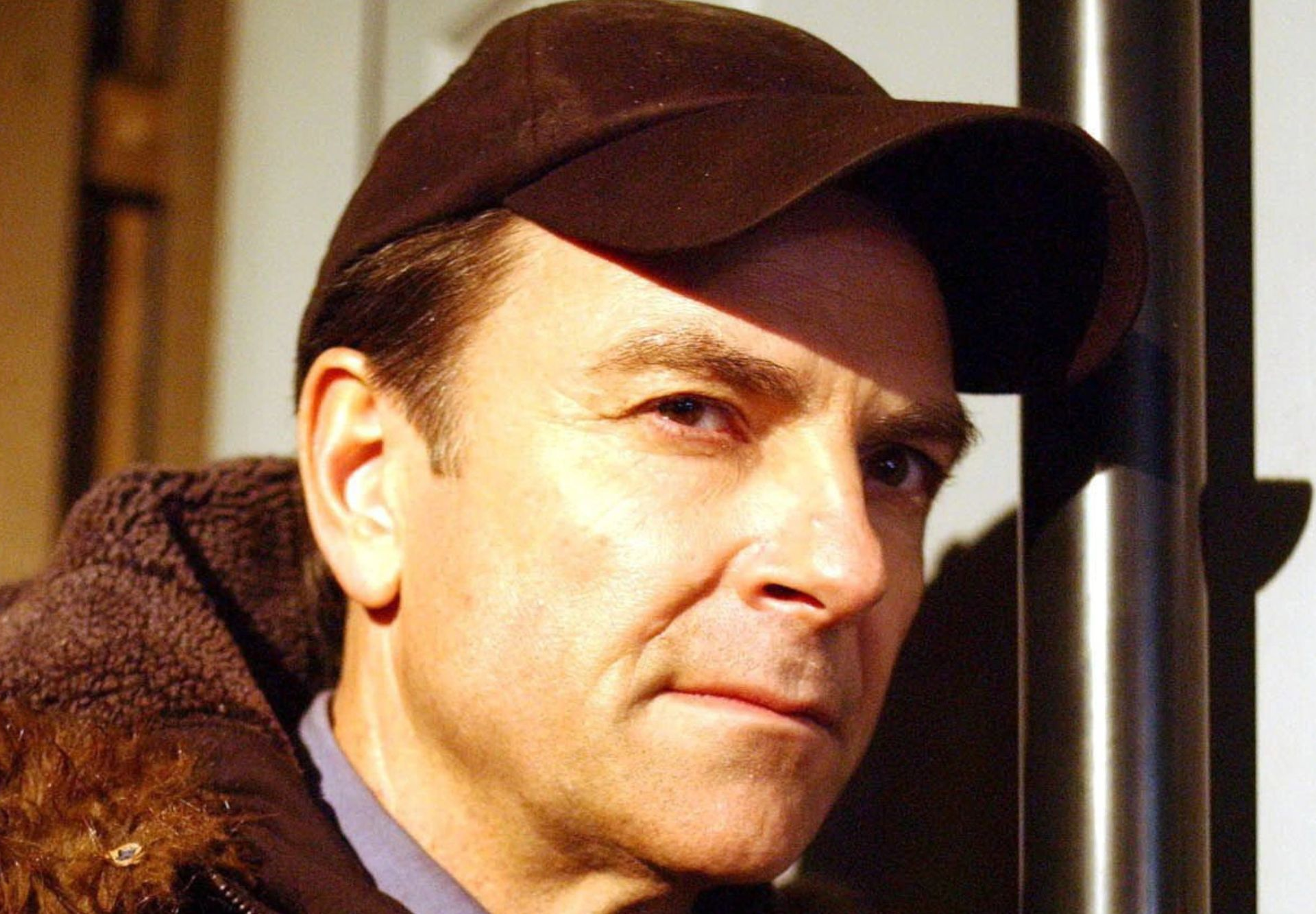
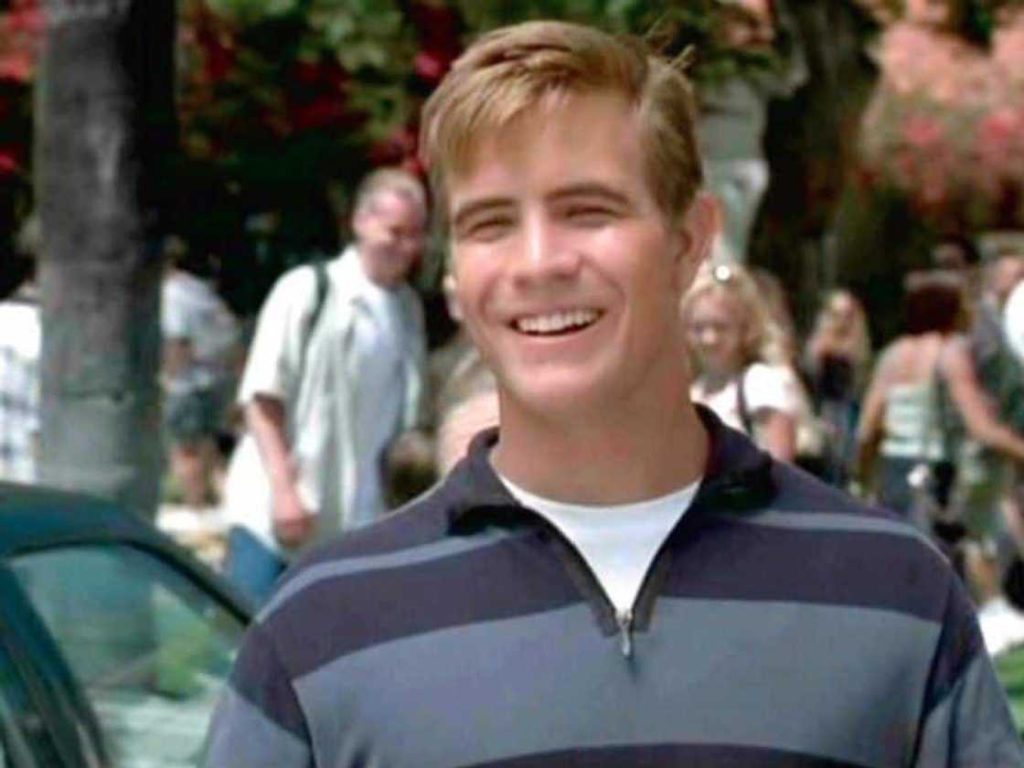
https://en.wikipedia.org/wiki/Artificial_intelligenceRichard Hillman, an actor with a promising future, was a talent taken far too soon. Best known for his role in the cult favorite Bring It On, Hillman left an impression on the Hollywood scene in a way that few others have. His untimely death, however, left many of his fans and the entertainment industry grieving and searching for answers. Hillman’s passing remains a topic of speculation, with few official details available about the circumstances. This article explores Hillman’s career, the potential causes surrounding his death, the mystery that followed, and the impact he left on those who knew him.
Early Life and Rise to Fame
Richard Hayes Hillman Jr. was born on December 13, 1974, in Los Angeles, California. Growing up in the heart of Hollywood, it’s perhaps unsurprising that he developed an early interest in acting and the arts. He made his on-screen debut in 1988, working his way up with small television appearances and movie roles. Hillman showed a versatility that allowed him to land diverse parts, from high-energy, comedic roles to more serious characters.
It was his role in Bring It On (2000), where he starred alongside Kirsten Dunst and Jesse Bradford, that became Hillman’s most memorable performance. His character, “Aaron,” left an impression as the unfaithful boyfriend, adding a layer of conflict and drama to the plot. Despite his relatively limited screen time, Hillman’s performance made him a memorable part of the movie, which later went on to become a cult classic.
However, even after Bring It On, Hillman struggled to find a foothold in Hollywood. His subsequent roles were limited, and he never managed to achieve the same level of fame. As a result, Hillman gradually faded from the limelight.
Career Struggles and Personal Life
Following his Bring It On success, Hillman struggled to secure major roles, an unfortunate reality for many actors in the competitive Hollywood industry. The industry’s high demands, typecasting, and, in some cases, bad luck can make it difficult for actors to sustain their careers. Hillman was no exception. Despite his talent and dedication, he could not break through into more prominent roles.
Additionally, Hillman was reportedly dealing with several personal struggles, though information about these struggles remains limited due to his private nature. Those close to him suggest that he faced battles that might have affected his mental health. Mental health is a crucial aspect for many actors, who often work in highly stressful and unpredictable conditions, especially for someone like Hillman who had tasted success but struggled to achieve more.
Some sources close to him have speculated that his personal and professional difficulties might have contributed to his untimely death. Nevertheless, the limited public information means much of his personal struggles remain speculative.
The Tragic Death of Richard Hillman
Richard Hillman passed away on June 27, 2009, at the age of 34. His death came as a shock to his fans and friends alike. The official cause of death, however, has not been publicly disclosed. This lack of information has led to a wide range of speculations and rumors.
The mystery surrounding Hillman’s death has led many to question whether substance abuse or mental health issues might have been contributing factors. Some have suggested that Hillman may have succumbed to a drug overdose or complications related to substance abuse. Others have considered the possibility of an accidental death. Yet, without concrete information, these remain only as unconfirmed speculations.
The silence from Hillman’s family and close friends has further fueled the mystery. Out of respect for Hillman and his family, details were withheld, which can be common in cases where personal issues or stigma might be involved. The decision to keep the circumstances private has only made the curiosity surrounding his death grow over time.
Hollywood’s Dark Side: A Harsh Reality for Many
Hillman’s story, while tragic, isn’t unique in Hollywood, where the pressure to succeed and maintain one’s image can weigh heavily on performers. The entertainment industry can be particularly unforgiving, and for many young actors, the pressure can become too much to handle. Hillman is one of many actors who found it challenging to keep their careers steady in Hollywood’s competitive environment.
This pressure, combined with the potential for substance abuse, mental health struggles, and personal issues, can lead to tragic endings for young talent. Hillman’s untimely death is a reminder of the pressures young actors face and how fame doesn’t always bring happiness or stability. His story highlights the importance of mental health support and the need for more transparent conversations about the challenges actors face behind the scenes.
Legacy and Impact on Fans
Despite his short life and brief career, Richard Hillman’s impact on his fans remains strong. His role in Bring It On brought him into the public eye, and his portrayal of “Aaron” left an impression on audiences. Over the years, fans have continued to celebrate his work and remember his talent.
The internet has kept Hillman’s memory alive, with fans posting tributes and sharing memories of his performance in Bring It On. Social media has played a significant role in preserving his legacy and keeping him in the thoughts of fans who may not have known him personally but felt connected to him through his work. He is remembered not only for his talent but also for the mystery and tragedy of his passing, adding a layer of fascination and sadness to his legacy.
Conclusion
Richard Hillman’s life and career were filled with promise and potential that, sadly, went unfulfilled due to his untimely death. While the exact cause of his death remains shrouded in mystery, his story serves as a cautionary tale about the challenges of the entertainment industry. His career and tragic end underline the importance of mental health, support, and the understanding that fame doesn’t always equate to happiness.
The legacy Hillman leaves behind is one that mixes talent, mystery, and sadness. Fans of Bring It On will always remember his contribution to the film, and the question surrounding his passing remains a testament to the personal struggles that can sometimes go unseen. Ultimately, Hillman’s story is a reminder of the fragility of life and the importance of supporting one another through challenges, whether in Hollywood or in everyday life.
FAQs
1. What was Richard Hillman’s cause of death?
The exact cause of Richard Hillman’s death has not been officially disclosed. His passing at the age of 34 has been surrounded by speculation, with rumors suggesting possible substance abuse or mental health struggles, but no official confirmation has been made public.
2. When did Richard Hillman die?
Richard Hillman passed away on June 27, 2009, in Los Angeles, California. His untimely death at 34 left fans and the entertainment community shocked and saddened.
3. What role was Richard Hillman best known for?
Richard Hillman is best known for his role as “Aaron” in the 2000 film Bring It On. His character was memorable for his betrayal of Kirsten Dunst’s character, making him a notable part of the cult classic.
4. Did Richard Hillman suffer from substance abuse?
There is no official information confirming that Richard Hillman suffered from substance abuse, though some rumors and speculations suggest it may have been a factor. The cause of his death has not been made public, and details about his personal struggles remain largely unknown.
5. What legacy did Richard Hillman leave behind?
Richard Hillman’s legacy is one of talent and tragedy. Though his acting career was brief, his role in Bring It On earned him a lasting place in popular culture. His untimely death has also sparked discussions about the pressures of Hollywood, especially for young actors.
6. How old was Richard Hillman when he died?
Richard Hillman was 34 years old at the time of his death on June 27, 2009.
Recent Posts
- The Iconic Legacy of of Princess Leia’s Bikini in Star Wars
- Ethan Kath: A Deep Dive into the Career and Controversies of the Crystal Castles Co-Founder
- The Enduring Allure of Leopard Print: A Fashion Phenomenon
- The Best “Saturday Night Live” (SNL) Skits of All Time
- The Latest Developments in Alien and UFO News
Trending
-

 Life Style1 month ago
Life Style1 month agoZoom Realty: Revolutionizing Real Estate in the Digital Age
-

 Life Style1 month ago
Life Style1 month agoPonderShort.com: A New Hub for Short-Form Content Enthusiasts
-

 Life Style1 month ago
Life Style1 month agoThe Grand Duke Is Mine: Spoilers and Plot Breakdown
-

 News1 month ago
News1 month agoAviva Taeidkashani: A Rising Star in the World of Art and Design
-

 News1 month ago
News1 month agoTechdae.frl: Ultimate Guide and Key Insights
-

 Life Style1 month ago
Life Style1 month agoWaethicc: A Global Perspective
-

 Tech1 month ago
Tech1 month agoExploring breakthroughtechnologies: The Next Frontier in Technology
-

 Entertainment1 month ago
Entertainment1 month agoShowbizztoday: Your Ultimate Source for Entertainment News

